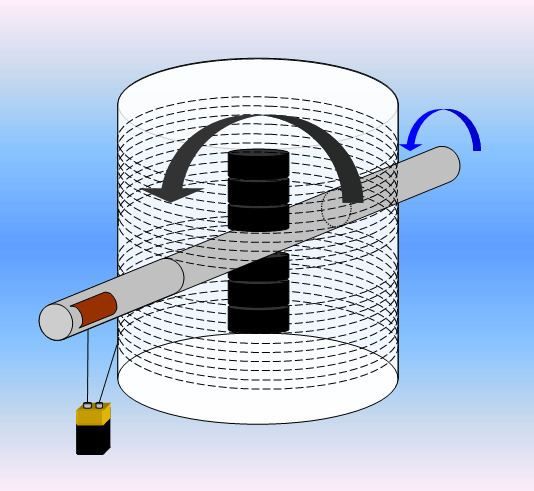Year proposed 1984 | Inventor Joseph Westley Newman | |
 | ||
Disciplines physicsmechanical engineering Core tenets Electromagnetic energy can be rendered useful by means other than atomic or chemical chain reactions. Specifically, a rotating permanent magnet spinning inside an electromagnetic pulsating conducting coil utilizes the coil's mass-energy and turns it into torque. Controversy Perpetual motion machines violate the laws of Conservation of Energy and the Laws of Thermodynamics. | ||
Newman's Energy Machine was a DC motor which the inventor, Joseph Newman, claimed to produce mechanical power exceeding the electrical power being supplied to it (an over-unity or perpetual motion device). In 1979, Newman attempted to patent the device, but was rejected by the United States Patent Office. When the rejection was later appealed, the United States district court requested that Newman's machine be tested by the National Bureau of Standards (NBS). The NBS concluded in June 1986 that output power was not greater than the input, and it was not a perpetual motion machine. Thus, the patent was again denied. The scientific community has rejected Newman's ideas about electricity and magnetism as pseudoscientific and his claims as false.
Contents
Claims by the inventor
By adding rolls to the armature of a motor, a larger and larger counter-electromotive force is generated on the motor. Newman outlined his claims about there being a fundamental electromagnetic interaction in all matter ultimately derived from only one type of force particle propagating at the speed of light. Newman claims that the motor derives its power by converting some of the mass of the copper in the coils into usable energy, in application of Einstein's Mass–energy equivalence. According to proponents of the Energy Machine, the most crucial part of the design concerns what happens as a result of mechanical commutation.
U.S. patent application
In 1979, Newman submitted an application for his device to the United States Patent and Trademark Office. The application was eventually rejected in 1983, which set off a lengthy court battle. The United States District Court requested a master of the court to make the final decision. William E. Schuyler, Jr, former Commissioner of U.S. Patent Office, Washington, DC was chosen by the court to make the final decision to award the patent or not award the patent to Newman. Schuyler supposed that evidence to support Newman's claim was overwhelming and found no contradictory factual evidence.
However, the judge ordered Newman's machine to be tested by the National Bureau of Standards (NBS). The National Bureau of Standards (NBS), now known as the National Institute of Standards and Technology (NIST), by request of the patent office, tested the device for several months and got negative results. In every case presented in the NBS report, the output power was less than power input from the battery pack, and therefore the efficiency was less than 100%. The court therefore upheld the rejection of the patent application.
Newman argued that he had been mistreated by the patent office, and tried to have his motor legalized directly by the US Congress. He obtained a hearing on 30 July 1986 in front of several senators, but he was unsuccessful. During the hearing, Newman refused to have the machine tested by independent experts, and senator John Glenn pointed out that his supposedly-independent expert actually had a prior business relationship with him.
The case is now cited in the USPTO's Manual of Patent Examining Procedure as an example of an "inoperative" invention that can't have any utility, concretely as a perpetual motion machine.
Perpetual motion controversy
Newman claims that his device derives its power by converting a small fraction of the mass in the copper coils into energy, and that it is therefore not a perpetual motion machine. Many scientists don't think this theory is correct, and still classify it as "just another impossible perpetual motion machine". Skeptics argue that regardless of the exact mode of operation, if the output power is higher than the required input electrical power, the device should be capable of running "closed-loop", producing excess power without external batteries.
Cease and desist order
In August 2007 the Alabama Securities Commission issued a cease and desist order to the "Newman Energy Corporation", alleging it had sold unregistered stock in the company. In January 2008 the company tendered offers of rescission to its nine Alabama investors, offering to reverse the sales. Eight of the investors declined the offer, electing to retain their investment; the ninth did not reply. The company agreed to pay the State of Alabama $7,000 in administrative assessments and investigative costs.
